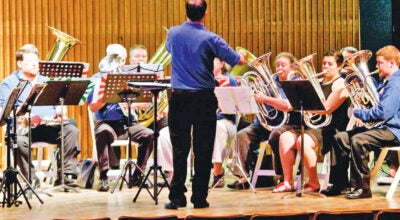Grade discrepancies prompt review
Published 10:17 am Wednesday, August 19, 2009
IRONTON — Not all “A’s” are created equal. Neither are “B’s,” “C’s,” and “D’s.”
In an effort to protect the success of its own high school students while keeping uniformity in the scores its assigns, Ironton City Schools will embark on a study to determine the need to tweak its grading system for students transferring into the district.
The six-month analysis will consider the advantage or disadvantage high school students who transfer into Ironton High School have when relocating from schools that possess different grading scales than Ironton.
While subtle and never becoming a concern in the past, school system officials feel Ironton City Schools needs to have protections in place should the district be challenged by a transferring student or their parents or guardian over its interpretation of their high school transcripts.
At issue are the multiple grading scales school districts throughout Lawrence County and the Tri-State area use for high school students and the valuable grade point average that results from them.
Many districts use a five-point discrete evaluation grading scale in which 100-90 would earn a grade of “A” and a GPA of 4.0 while 89-80 would earn a “B” and a GPA of 3.0. Ironton uses a similar grading scale but where 100-93 is an “A” and a 4.0 GPA while 92-85 is a “B” and earns a 3.0 GPA.
That creates a challenge for some students caught on the fringes.
For example, a student transferring from a district that used the 100-90 grading scale and averaged a 92 percent in all their classes would drop from a 4.0 student at their previous district to a 3.0 student at Ironton.
To remedy the problem, Superintendent Dean Nance proposed at a special Aug. 3 board meeting to have the district alter its school admissions policy to meet transfers half way.
In Nance’s proposal, the grades of students transferring into the Ironton City School system from another system would be changed to “alpha grades” based on the former school’s grading scale and converted.
From the previous example, the student who averaged a 92 percent in all their classes would be assigned an “A-minus” and a 3.7 GPA by Ironton for grades earned at another district. Ironton does not issue pluses or minuses in its current grading scale.
Nance said at the Aug. 3 meeting that this issue was brought to his attention recently by three students and it was the “first time in eight years this has ever come up.”
“If we are challenged by somebody it would be nice to have something in place,” Nance told Ironton School Board officials earlier this month.
Currently, the district does not have a written policy in place in case of challenges.
Nance added that most of the problems would be at the “top end of the scale” as the district was already bumping up students on the bottom end who would be at a “D” level with other districts and an “F” with Ironton.
“When someone comes into our system, they have to realize that they are coming into our grading system,” board member John Wolfe said on Aug. 3.
Another issue that the analysis plans on deciphering is the effect the proposal would have on potential college scholarships.
First brought up by board member Jerry Rowe earlier this month and echoed Tuesday by Ironton High School guidance counselor Marissa Fields was how transfers, especially senior transfers or transfers with weighted classes, could influence Ironton students GPA rankings.
“I’m all about the kids, but I’m for our own kids first and foremost,” Fields told the board Tuesday night while explaining the differences in scales and transcripts.
Fields had asked the board to postpone any type of decision on the matter until after the current school year, but said she would report back to them in six months with a progress report.




